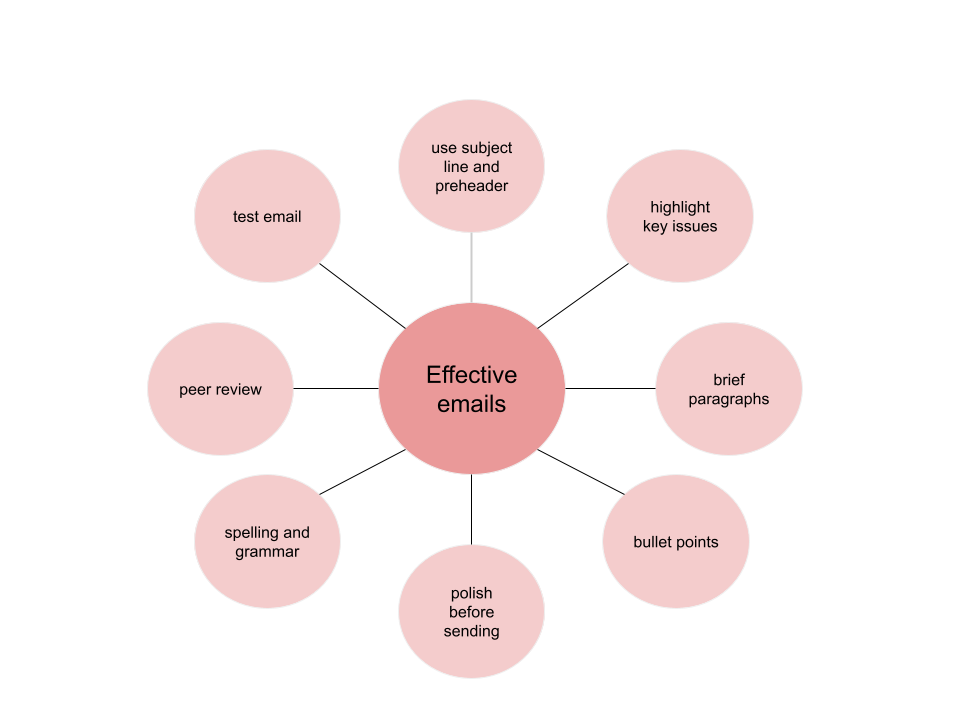Emails: best practices
This article outlines recommended best practices for marketers to improve email deliverability rates. When creating emails, it's important to provide a clear, compelling call to action that draws users into deeper engagement with your product or service. To increase engagement and positive brand recall, make the messaging fun and personalized to the user's journey. Furthermore, offering incentives or bonuses can give readers a compelling reason to take the desired action.
Best practices for writing effective emails
Make maximum use of subject line
When crafting the subject line for your email, it's crucial to ensure that it provides a clear summary of the email's content, helping the recipient understand what to expect before opening it.
- Keep it short: keep your subject lines brief and to the point, using no more than 6-10 words to avoid getting cut off on most email clients;
- Create urgency: use time limits or mention limited quantities to create a sense of urgency that motivates subscribers to open your email;
- Use emojis 😀: using special characters at the beginning of your email subject lines can improve open rates. To find the best results, test different symbols and positions, but be mindful not to overuse them or rely on colored symbols too heavily;
- Add personalization: personalizing subject lines with the recipient's name or other relevant data can significantly increase engagement and conversions;
- Make an offer: follow up on website activity with an email offer that motivates customers to take action and complete a purchase.
Remember, a clear subject line sets expectations and increases the chances of your email being opened and read.
Craft a click-worthy email preheader
To increase open email rates, it's important to create curiosity among subscribers through the preheader. Preheader text is the brief text displayed after an email's subject line summarizes the message's main point. The preheader should be limited to 55 words or characters to display properly on mobile and desktop. It should support the subject line and not repeat it, providing a strong call to action and additional content to make the email more appealing and interesting.
Consider the following best practices to write a call to action (СTA):
- Use action-oriented verbs at the beginning, such as “click,” “read,” "download," "register," or "subscribe."
- Convey a sense of urgency, if appropriate, by using words like "now," "limited time," or "today."
- Clearly state the benefit or value that the user will receive by taking action, such as "Get access to exclusive content" or "Save 20% on your first purchase."
- Use contrasting colors or bolding to make the call to action stand out visually, but maintain consistency with your brand's color scheme and design.
Keep your email concise
To ensure your email is read and not lost in a crowded inbox, it's best to keep it concise. Since professionals spend almost a third of their workday on email, and the average full-time worker in America receives 120 messages per day, it's important to get straight to the point. Despite the popularity of email as a preferred communication method, it's still best to avoid including extraneous information and keep your message brief.
Use professional tone
When composing emails, be mindful of your tone and avoid using all-caps or multiple exclamation points, as this can come across as aggressive or unprofessional. Instead, maintain a professional tone by avoiding informal language and showing respect in your choice of words, regardless of the recipient or context.
Use proper formatting
Using proper formatting is key to making your emails more readable and engaging. Here are some best practices for formatting:
- Use short paragraphs: Large blocks of text can be overwhelming and difficult to read. Breaking up your content into shorter paragraphs can make it easier for readers to digest.
- Use bullet points and numbered lists: These formats help to organize information and make it more visually appealing. They also allow readers to quickly scan your email and find the information they're looking for.
- Use bold or italicized text sparingly: These formatting options can effectively emphasize important information, but be careful not to overuse them.
- Use subheadings: If your email is longer or contains multiple sections, use subheadings to break up the content and make it easier to navigate.
- Use images and white space: Including images and white space can make your email more visually appealing and easier for the eyes.
Monitor your sender score
Maintaining a good Sender Score is crucial to ensure a positive reputation for your IP address and to improve email deliverability. Your Sender Score ranges from 0-100 and can be checked at Senderscore.org. A higher score implies a better reputation and a greater chance of your emails being delivered successfully.
Polish your emails before sending
To maintain a professional image, it's crucial to take a moment to carefully proofread your email before sending it. Check for grammar, spelling, and punctuation errors, as well as for clarity and tone.
Ensure your email appears professional and error-free by utilizing the "send test email" feature before sending it out. Send the test email to a small group of people to identify and address any potential issues with formatting, content, or deliverability. Regular testing can help improve your email campaign's effectiveness and prevent issues impacting your email's deliverability.
Conclusion
By following these best practices, you can improve the effectiveness of your email campaigns and increase engagement with your audience. Implementing these strategies will help you craft more professional, targeted, and engaging emails that resonate with your subscribers, ultimately leading to better results for your business.

